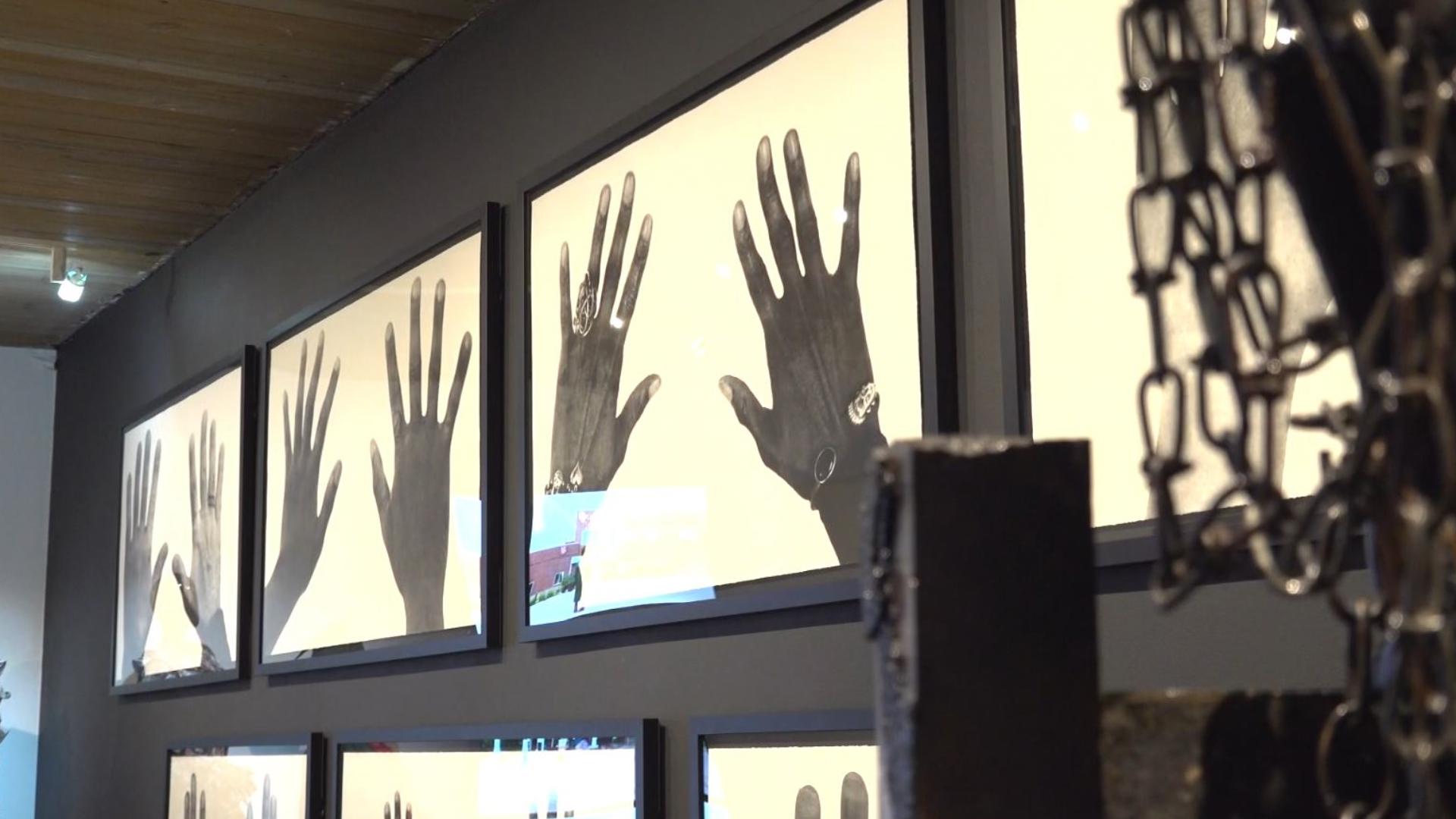WEBSTER GROVES, Mo. — It's been 10 years since Michael Brown Jr. was killed in the streets of Ferguson by a police officer.
Artists around St. Louis shared their process of healing and processing the emotions for the situation that remains fragile to numerous communities.
Cheeraz Gormon is not just a poet. She's also an activist and photographer and one of more than a dozen creatives who were a part of an art show this past spring at Webster University titled "Ferguson and Beyond: Artistic Responses to a Decade of Social Upheaval 2014-2024."
The exhibition captured cultural histories that came forth because of the killing of Brown. It was put together with the help of St. Louis filmmaker William Morris, who co-curated the show with Webster adjunct professor Terri F. Reilly and Webster alumna Lillian Gardner.
Brown’s father, Michael Brown Sr., and stepmother, Cal D. Brown, spoke at the opening ceremony with Ferguson Mayor Ella M. Jones.
The exhibition was comprised of paintings, sculptures, video and poetry with a focus on responses from artists of color from around the St. Louis region and beyond.
"(The art show) mirrors what the artist sees in society, and in this case, it's what the artists see in the streets of Ferguson," Reilly said.
And in this case, they saw Michael Brown Jr.'s lifeless body in the street on Aug. 9, 2014.
Gormon described her piece as layers of the Department of Justice report on Ferguson. The piece took her three weeks to make. It's made of coarse salt, acrylic paint and then placed on glass. She said her mixed-medium piece was inspired by a poem she wrote after Brown's death called "We Better Pull This Wire Now."
"We need to believe what (the people of Ferguson) are experiencing with the police in their neighborhoods," Gormon said, speaking to the fact that as a community people knew things were happening in for years in Ferguson.
Gormon said she understood it's necessary to get things in writing for historical record to make sure change can happen.
Gormon completed the piece in her kitchen at her home in University City. It's the same place she was 10 years ago when her phone was flooded with images of Brown's body in the streets at the Canfield Green Apartments.
Gormon said putting together the piece was meditative, but it didn't heal all her wounds.
"I just allowed myself to feel all of the feelings that came up. I will not deny, yes, there were times that I had to get up and walk away because I would read something, and I would just be like, 'You know what? Let me, let me go and take a breath,' because this is not resolved. We're still dealing with this as a society," Gormon said.
Jason Vasser-Elong also provided his poetry to the art show with his poem called "Martyr." He described similar feelings of relief working through his grief by creating art.
"Poetry became that mechanism by which I was able to express myself in a way that didn't hurt anybody, but I was still able to express hurt. I was able to express my own feelings of of being sort of on the receiving end of oppression," Vasser-Elong said.
Health care professionals at SSM Health and Saint Louis University’s School of Medicine, including Dr. Maurice Redden, said using art as an outlet can decrease depression and anxiety, but they acknowledged that many times, there's suppression of emotions in the Black community.
"Having a trusted, respectful psychiatrist (is important) in general because there is a shortage of Black doctors and Black psychiatrists, but having an appropriate professional can help everyone," Redden said.
To poets like Gormon and Vasser-Elong, it's all about listening to your mind and body.
"It's important to know how what your triggers are. I take to my writing pad and I have a conversation with myself in a way that will end up becoming a poem, that someone will be able to glean some energy from that can help them to deal with their moment of adversity when it comes," Vasser-Elong said.
Although the art show is no longer up at Webster University, Gormon's work is went on display at the Ferguson Empowerment Center.

